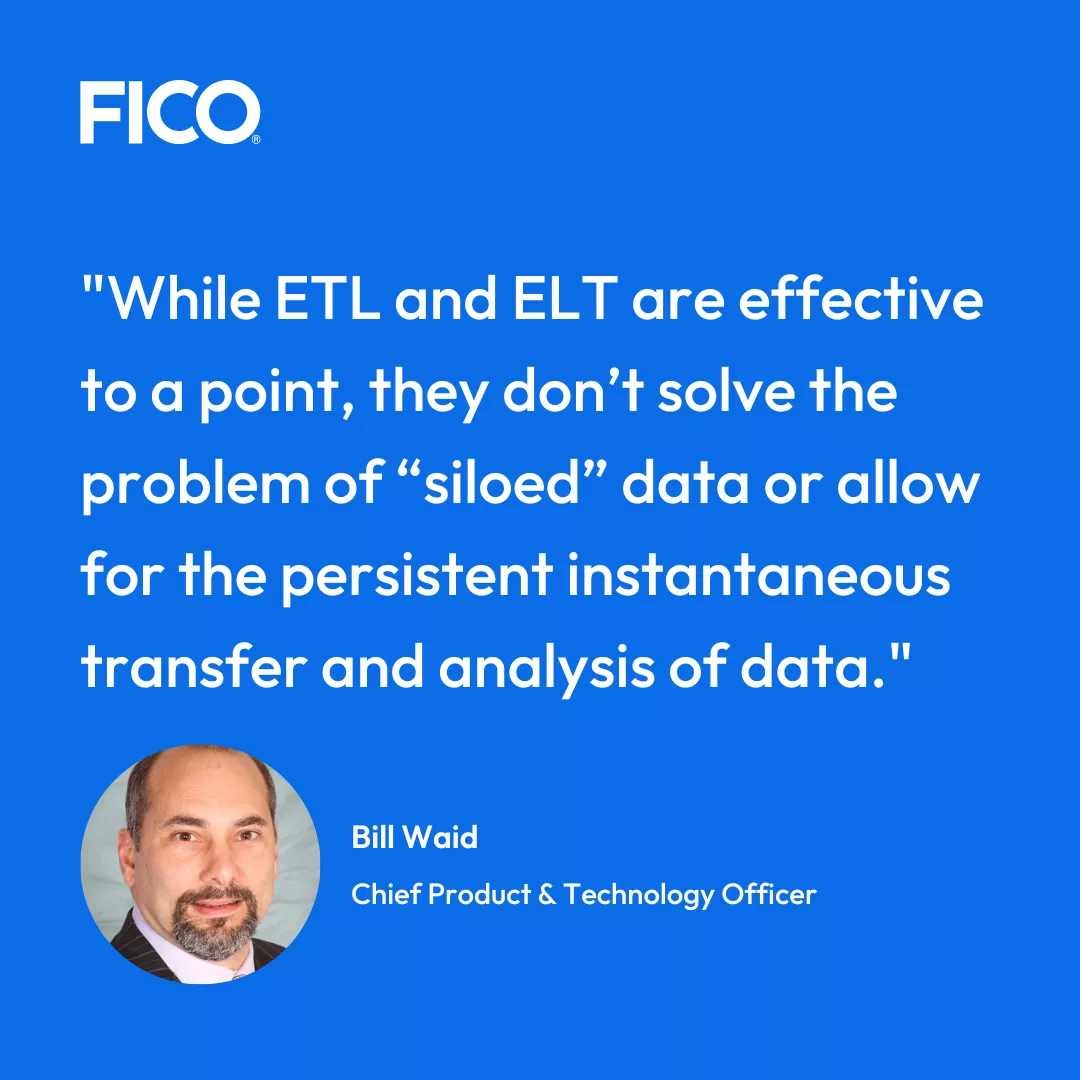How to Extract the Maximum Value from Your Information Assets
Since "data is the new oil,” it's critical to find much more efficient ways to find it, extract it, and refine it into something valuable for your digital transformation

In the late 1800s, John D. Rockefeller, J. Paul Getty, H.L. Hunt, and many others started making vast personal fortunes in oil. Today, it’s often said that with modern digital technologies “data is the new oil.” Indeed, eight of the ten richest people in the world are not oil magnates, they are founders and owners of information purveying conglomerates like Google, Facebook, Twitter (X), Amazon, and Oracle, according to Forbes.
Just as oil has little value in its raw state, data only becomes valuable when a company finds it, extracts it, and refines it into something of value. Their motivations could be two-fold: ward off competing digital disruptors – like fintechs and insurtechs – or to leverage their data as the raw material for next-generation, information-rich products and services of their own as part of their digital transformation innovation strategy.
When harnessed, data has two intrinsic forms of value: for internal use and for external marketability. Both are critical to a digital transformation effort:
Internal use: this is data that helps your company make smarter, faster, more profitable strategic decisions. It is operational in nature and serves as the “secret sauce” that helps companies outsmart and outpace their competition.
External marketability: this is data you use to create information-based products and services that can be marketed to customers and prospects. It could be new direct-to-end-consumer products, or API-based features and functions that complement solutions from third-party technology partners.
A Platform for Success
In the competitive digital economy, a gold rush mentality is driving companies to invest trillions of dollars into digital transformation. The overarching goal of digital transformation is unifying all information across the enterprise, using digital technologies to democratize it regardless of its source or the role of domain experts using it, and rallying everyone in the organization to use the resulting information assets to build agile, transformation-rich, customer-centric solutions. Such innovation will accelerate the development of offerings that result in higher levels of short-term customer satisfaction and long-term retention, which in turn fuels longer customer lifecycles and higher lifetime value (share of wallet).

From the outset, this requires a massive data integration effort. For years, the most common approaches to data integration have been digital technologies like ETL (Extract, Transform, and Load) and ELT (Extract, Load, and Transform). While these were once new technologies and effective to a point, they don’t solve the problem of “siloed” data or allow for the persistent instantaneous transfer and analysis of data in a manner needed to enable real-time decisions and actions.
Because of the time, costs, and technological shortcomings of previous-generation approaches, more and more companies are turning to agile enterprise decisioning platforms to accelerate the attainment of their digital transformation goals by holistically orchestrating their enterprise information. In a recent study by IDG, it was reported that the top priority cited by IT leaders responsible for new technologies was “Evaluating optimal IT Platforms,” and more than 65% are already executing towards it as part of digital transformation strategy. .
Why are enterprise decisioning platforms a vastly superior alternative to old-school ETL and ELT approaches in transformation? For starters, solutions like FICO Platform enable the corporate cloud-wide sharing of information in real-time. This eliminates challenges caused by siloed systems, to allow companies to:
Share, democratize, and mobilize all information assets across the company. This is essential to digital transformation because it allows businesses to use automation to unify all of their data from every source, they can connect the dots and fill in the gaps between siloed departmental applications. This enables business model and business process changes that ensure better corporate, not just departmental, decisions at every point of the customer lifecycle. The persistent application of AI, machine learning, and algorithmic analytics applied in real time iteratively improves the quality of data, and thus decisions, over time.
Codify business users’ domain expertise into ubiquitous, persistently applied automated intelligence. By empowering and encouraging business users to create and manage information strategies, rules, and analytics that drive decisions and actions, companies combine the “book smarts” of the technology organization with the “street smarts” of business users. This enables companies to respond swiftly to shifts in business scenarios and foster a customer-driven mindset that ensures more prosperous outcomes, the ultimate goal of digital transformation
Leverage and re-use connected decision assets to improve decision automation across the enterprise and across the customer lifecycle. This is a transformational capability that gives companies the ability to create customized, targeted decisioning strategies that are consistent, transparent, explainable and expandable as needed over time.
Simulate and optimize strategies before they are put into production. This provides highly accurate predictions about programs’ prospects for success, giving companies the highest possible degree of certainty that programs will perform as desired when launched. By iteratively simulating, fine-tuning, and perfecting strategies prior to launch, companies ensure optimal, predictable results, to maximize success rate and ROI.
Consistently deliver automated, seamless, hyper-personalized customer experiences. This enables companies to offer customers consistent, tailored experiences that are reached by, and infused with, customer intelligence. Armed with AI-validated personalized customer strategies, companies can more accurately predict and effectively serve their clients’ immediate and future needs, paving the way for cross-selling and up-selling. This is the key to consistently delivering a compelling customer experience, which raises short-term customer satisfaction and loyalty, as well as long-term customer retention and share-of-wallet, the payoff for your digital transformation investment.
Why are these capabilities so powerful, empowering, transformational? Circling back to our oil metaphor, they lay the foundation for us to achieve our original goal: finding, extracting, and refining data. Here’s how this plays out in a typical digital transformation scenario:
Finding the most relevant data: Most data – whether for internal and external data use – exists in what is largely a “raw” state. It may be structured data, as in a database or application, which makes it partially refined, but on its own it’s not typically ready for use in collaborative, enterprise-wide transformation solutions. Estimates vary, but most experts report that 80-90% of data is unstructured, which means to make it useful, you’re going to be relying heavily on AI, machine learning, and algorithmic analytics… which, in turn, is done most efficiently in an enterprise decisioning platform designed for that purpose.
Extracting and storing data: Once the locations of information are identified, a platform exposes and unifies data – wherever in the enterprise cloud it resides – to make it interoperable across the organization. This promotes widespread assimilation and reusability of information, with each application filling in the blind spots of the others. And because of platform features like no-code composability, verified information assets can be used (and continually re-used) by technical and business users alike to combine the best book smarts and street smarts from across the organization.
Refining raw data into actionable insights: Once composable information becomes the lingua franca for the organization’s people, processes, and technologies, companies can unleash astonishing collaboration, innovation, and acceleration. Armed with continually refreshed ideas and insights, domain experts can pursue, simulate, and optimize both customer and business strategies at an astonishing pace, making transformation a reality. These strategies can be constantly enriched by AI, machine learning, and algorithmic analytics, allowing the system to “learn” the most effective and efficient strategies and their outcomes, incrementally producing an ever more powerful base of knowledge.
Just as oil was the road to riches 150 years ago, today data – or rather, smarter customer strategies resulting in actionable customer insights – is the key to lucrative business outcomes in the modern world, especially in data-intensive industries like banking and insurance with vast digital transformation goals. According to a report by McKinsey & Company, business leaders across all industries predict that by 2026, half of their revenues will come from products, services, or businesses that haven’t yet been created. This may or may not hold true for industries like banking and insurance, whose core services are largely the same as they’ve been for centuries, but smarter, faster, more profitable decisions will always be worth their weight in gold… or oil.
Learn How FICO Platform Can Power Your Digital Transformation
Explore innovation with FICO Platform
Watch the video “FICO® Platform: Applied Intelligence, when and where it matters”
Read the whitepaper “FICO® Enterprise Intelligence Network: Redefining the next generation of applied intelligence”
Read the article from The Journal of Digital Banking, “How Financial Services Leaders Are Using Enterprise Intelligence to Optimize Efficiency Ratios”
Watch FICO Platform in action with the story of your everyday consumer, Digital Jane
Popular Posts

Business and IT Alignment is Critical to Your AI Success
These are the five pillars that can unite business and IT goals and convert artificial intelligence into measurable value — fast
Read more
Average U.S. FICO Score at 717 as More Consumers Face Financial Headwinds
Outlier or Start of a New Credit Score Trend?
Read more
FICO® Score 10 T Decisively Beats VantageScore 4.0 on Predictability
An analysis by FICO data scientists has found that FICO Score 10 T significantly outperforms VantageScore 4.0 in mortgage origination predictive power.
Read moreTake the next step
Connect with FICO for answers to all your product and solution questions. Interested in becoming a business partner? Contact us to learn more. We look forward to hearing from you.
